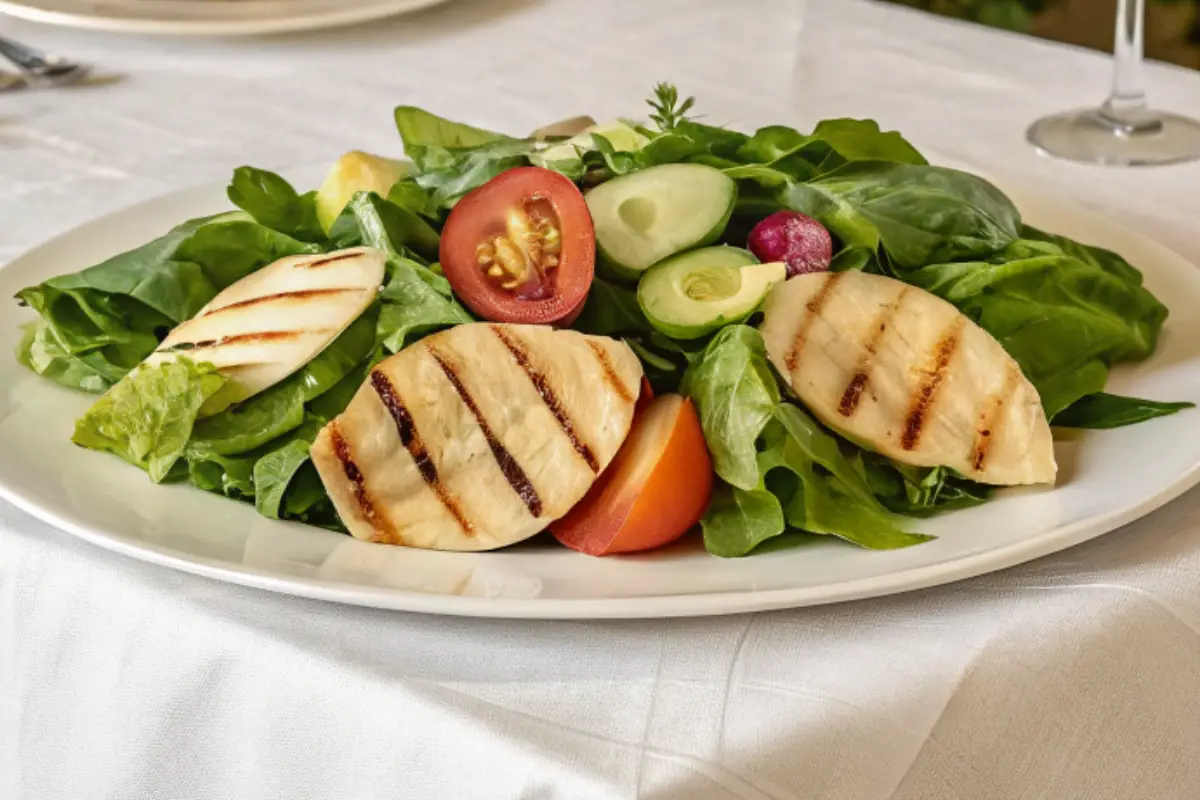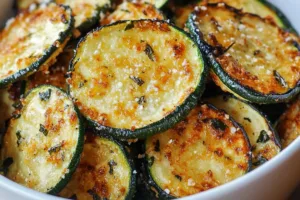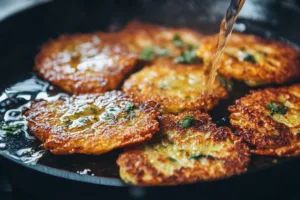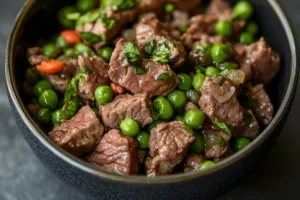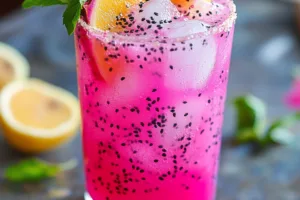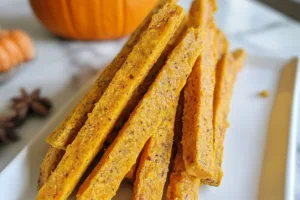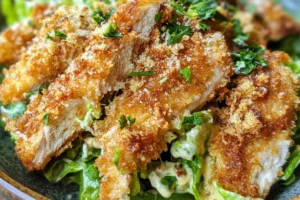I’m Emma, and I’m so happy you’re here. Alongside Mari, I’ve helped craft recipes that make healthy eating feel comforting, practical, and full of flavor. If you’ve ever tried cutting calories only to feel cranky, tired, or just plain deprived—you’re not alone. I’ve been there too.
But here’s the good news: following a 1500 calorie meal plan doesn’t have to mean giving up the foods you love. In fact, it can be a beautiful way to reconnect with food, fuel your body with purpose, and still enjoy every bite.
A 1500 calorie plan is often the sweet spot for gradual weight loss or mindful maintenance, but the magic lies in how those calories are used. Are you filling your plate with satisfying, nutrient-rich meals—or grazing all day on snacks that leave you wanting more?
This post isn’t about rigid food rules. It’s about giving yourself structure without restriction—building a lifestyle where you feel full, energized, and in control. I’ll guide you through how this kind of meal plan works and how you can make it your own, with comforting, delicious meals that feel just as warm and welcoming as any dish from our family kitchen.
Why 1500 Calories?
Most diets throw around calorie numbers like confetti — 1200, 1800, even 2200 — but why 1500? And who decided that was a “magic number”?
Who is it suitable for?
A 1500 calorie meal plan generally works well for:
- Women looking to lose weight safely without drastic calorie drops
- Men aiming for modest weight loss or maintenance with reduced activity
- People with sedentary to moderately active lifestyles
- Anyone wanting to reset their eating habits with structure and simplicity
This calorie level strikes a balance: it’s low enough to create a calorie deficit for weight loss but high enough to allow for satisfying meals and proper nutrition.
More recipes for weight loss :
Weight maintenance vs. weight loss
If your goal is weight maintenance, 1500 calories might feel a bit tight unless you’re fairly inactive. For weight loss, however, this number typically supports gradual fat reduction of about 1 pound per week — a safe and sustainable pace recommended by most health professionals.
But remember, no plan is one-size-fits-all. Your age, gender, height, weight, and activity level all play into your exact calorie needs. A 1500 calorie plan is a helpful starting point — not a prison sentence.
The Psychology of Feeling Restricted
We’ve all been there — staring at a sad salad, fantasizing about carbs, and counting down the minutes to the next meal. But food isn’t supposed to feel like a punishment. So why do we feel so restricted when trying to eat healthier?
The diet culture trap
Traditional dieting tells us we need to suffer to succeed — that hunger equals progress and satisfaction means failure. This toxic mindset makes us associate restriction with discipline and indulgence with weakness. But this black-and-white thinking only sets us up for binge eating, yo-yo dieting, and food guilt.
Freedom within boundaries
A 1500 calorie meal plan works best when you stop thinking of it as a limit and start seeing it as a budget. Just like money, you can spend your calories on junk — quick, cheap, and unsatisfying — or invest them in whole, nourishing meals that keep you full and energized. The choice is yours.
When you plan your meals with intention and focus on foods you enjoy, the idea of restriction melts away. You’re not cutting out pleasure — you’re choosing to feel better.
Nutritional Goals of a 1500 Calorie Diet
When most people hear “1500 calories,” they immediately think, “That’s not much!” But here’s the reality: when those calories come from whole, nutrient-rich foods, they stretch much further than you’d expect. It’s not just about how much you’re eating — it’s about what you’re eating.
So, let’s break down how to make those 1500 calories work smarter, not harder.
Macronutrient Breakdown
A balanced 1500 calorie diet includes the three essential macronutrients: carbohydrates, proteins, and fats. Each plays a vital role in keeping your body functioning optimally, and the right balance helps you feel satisfied and energized throughout the day.
Here’s a simple macronutrient breakdown for a 1500 calorie plan:
| Macronutrient | Daily Percentage | Daily Grams (approx.) | Role in the Body |
|---|---|---|---|
| Carbohydrates | 40-50% | 150-188g | Primary energy source, supports brain function |
| Proteins | 25-30% | 94-112g | Builds muscle, aids recovery, boosts satiety |
| Fats | 20-30% | 33-50g | Hormone regulation, nutrient absorption |
Pro tip: Prioritize complex carbs (like whole grains, fruits, and vegetables) over simple sugars. Choose lean proteins like chicken, fish, tofu, and legumes. And when it comes to fats, think healthy fats — avocado, nuts, seeds, and olive oil.
Avoiding Nutrient Deficiencies
Eating fewer calories means you have less room for error — every bite needs to count. That’s why nutrient density is key. If you’re loading your plate with empty calories, you’ll likely miss out on vital vitamins and minerals.
Here are some important nutrients to prioritize in a 1500 calorie plan:
- Fiber: Helps digestion and keeps you full longer. Aim for 25–30g/day.
- Calcium & Vitamin D: Essential for bone health, especially for women.
- Iron: Crucial for energy levels, especially in menstruating individuals.
- B Vitamins: Help convert food into energy.
- Potassium & Magnesium: Support heart health and muscle function.
Include a variety of fruits, vegetables, lean proteins, and whole grains to help cover these bases. A multivitamin isn’t always necessary, but it can act as a nutritional safety net if you’re still fine-tuning your meals.
Hydration also plays a huge role in how you feel. Even mild dehydration can mimic hunger or fatigue. Drink at least 8 glasses of water a day — more if you’re active or in a hot climate.
Meal Planning Made Easy
Okay, so now you know what you should eat — but how do you actually make it work in your everyday life? That’s where meal planning comes in. It doesn’t have to be rigid or boring — in fact, it can be surprisingly freeing.
Portion Control Without Obsessing
Nobody wants to weigh every leaf of spinach or count every blueberry. Good news: you don’t have to. Portion control can be simple with some visual cues:
- A closed fist = about 1 cup of carbs or veggies
- A palm = a serving of protein (about 3-4 oz)
- A thumb = a serving of fats like oils or nut butter
Using these guides keeps you on track without overthinking it. Focus on building balanced meals using the plate method:
- ½ plate veggies and fruit
- ¼ plate lean protein
- ¼ plate whole grains or complex carbs
- Add a thumb-sized portion of healthy fat
This method naturally fits within the 1500 calorie range, especially if you use whole, unprocessed foods.
Batch Cooking and Meal Prep
Imagine opening your fridge to find healthy meals already waiting for you. That’s the magic of meal prep — it saves time, cuts stress, and removes the temptation of last-minute takeout.
Here’s how to prep smart for a 1500 calorie meal plan:
- Pick 2 proteins: grilled chicken, baked tofu, boiled eggs
- Prep 2 grains: brown rice, quinoa, or whole-wheat pasta
- Chop 3-4 veggies: broccoli, bell peppers, spinach, carrots
- Make 1-2 sauces or dressings: homemade vinaigrettes or tahini-based sauces
- Portion into containers for grab-and-go ease
With these building blocks, you can mix and match meals without getting bored or off track.
Sample 1500 Calorie Meal Plans
Now for the fun part — what does a full day of eating actually look like on a 1500 calorie meal plan? The beauty of this way of eating is that it can adapt to just about any dietary preference, whether you’re an omnivore, vegetarian, or focused on higher protein for workouts and satiety.
Below, I’ve created three full-day sample menus, each designed to hit right around 1500 calories while being flavorful, balanced, and satisfying.
Omnivore-Friendly 1500 Calorie Meal Plan
This plan includes lean animal proteins, whole grains, and plenty of produce for fiber and micronutrients.
Breakfast (350 calories)
- 2 scrambled eggs cooked in 1 tsp olive oil (140 cal)
- 1 slice whole grain toast (80 cal)
- ½ avocado (120 cal)
- Black coffee or tea (0 cal)
Lunch (400 calories)
- Grilled chicken salad:
- 3 oz grilled chicken breast (140 cal)
- 2 cups mixed greens (20 cal)
- ¼ cup cherry tomatoes, cucumber, red onion (25 cal)
- 1 tbsp feta cheese (50 cal)
- 1 tbsp olive oil + vinegar dressing (100 cal)
- 5 whole grain crackers (65 cal)
Snack (150 calories)
- Greek yogurt, plain, low-fat (¾ cup) + 1 tsp honey + cinnamon
Dinner (550 calories)
- 4 oz salmon fillet (240 cal)
- ½ cup cooked quinoa (110 cal)
- 1 cup steamed broccoli (50 cal)
- 1 tsp olive oil for roasting or drizzling (40 cal)
- 1 small baked sweet potato (110 cal)
Vegetarian 1500 Calorie Meal Plan
A plant-powered menu full of fiber, plant protein, and healthy fats.
Breakfast (300 calories)
- Overnight oats with:
- ½ cup rolled oats
- ½ banana, sliced
- 1 tbsp chia seeds
- ½ cup almond milk
- Dash of cinnamon
Lunch (450 calories)
- Whole grain wrap with:
- ½ cup hummus
- Mixed greens
- Shredded carrots
- Avocado slices
- Bell pepper strips
- Side: 1 small apple
Snack (150 calories)
- 10 almonds + 1 small orange
Dinner (600 calories)
- Stir-fry:
- ½ block tofu (150 cal)
- 1 cup cooked brown rice (200 cal)
- 1 cup mixed stir-fry veggies (broccoli, peppers, snow peas, 50 cal)
- 1 tbsp sesame oil + low-sodium soy sauce (100 cal)
- 1 tsp sesame seeds (20 cal)
High-Protein 1500 Calorie Meal Plan
Ideal for those who work out regularly or want to stay full longer.
Breakfast (350 calories)
- Protein smoothie:
- 1 scoop whey or plant protein (100-120 cal)
- ½ banana
- 1 tbsp peanut butter
- ½ cup frozen berries
- 1 cup unsweetened almond milk
Lunch (450 calories)
- Turkey & veggie bowl:
- 4 oz lean ground turkey
- ½ cup cooked farro
- Roasted Brussels sprouts and zucchini
- 1 tbsp tahini dressing
Snack (150 calories)
- 2 hard-boiled eggs or 1 string cheese + cucumber slices
Dinner (550 calories)
- 4 oz grilled chicken breast
- ½ cup mashed sweet potato with 1 tsp butter
- 1 cup sautéed spinach with garlic and olive oil
- Side salad with lemon vinaigrette
Best Snacks Under 200 Calories
Let’s be honest — snacks are life. They bridge the gap between meals, curb hunger spikes, and can even prevent overeating later on. But the key to smart snacking on a 1500 calorie meal plan is making those bites count — nutritionally and flavor-wise.
Here’s a breakdown of low-calorie snack ideas under 200 calories that are both satisfying and nutrient-dense.
Sweet Snack Options
If you’ve got a sweet tooth, don’t fight it — feed it wisely. These sweet treats satisfy your cravings without derailing your goals.
1. Greek Yogurt + Berries (150 cal)
- ½ cup low-fat plain Greek yogurt
- ¼ cup mixed berries (blueberries, raspberries, strawberries)
- Dash of cinnamon or a drizzle of honey (optional)
✅ Packed with protein and antioxidants
✅ Supports gut health
2. Frozen Banana Slices + Dark Chocolate Drizzle (180 cal)
- ½ banana, sliced and frozen
- 1 square dark chocolate, melted and drizzled
✅ Feels like dessert
✅ Great potassium boost
3. Chia Pudding (190 cal)
- 2 tbsp chia seeds
- ½ cup almond milk
- A few drops of vanilla extract + cinnamon
✅ High in omega-3s and fiber
✅ Makes you feel full for hours
4. Apple Slices + Peanut Butter (170 cal)
- 1 medium apple
- 1 tbsp natural peanut butter
✅ Healthy carbs + fat combo
✅ Great for energy and satiety
Savory Snack Options
If you’re into salty, crunchy, or creamy snacks, there are plenty of guilt-free options to keep you going.
1. Hard-Boiled Eggs (140 cal)
- 2 eggs, seasoned with paprika or hot sauce
✅ High-protein, zero carb
✅ Keeps hunger at bay
2. Hummus + Veggies (150 cal)
- 2 tbsp hummus
- Raw veggies (carrots, cucumber, bell peppers, celery)
✅ Crunchy, fiber-rich, and satisfying
✅ Packs protein and healthy fats
3. String Cheese + Cherry Tomatoes (160 cal)
- 1 stick part-skim mozzarella
- 1 handful of cherry tomatoes
✅ Calcium-rich
✅ Low carb and full of flavor
4. Air-Popped Popcorn (130 cal)
- 3 cups plain popcorn
- Light olive oil spray + sea salt or nutritional yeast
✅ Low calorie, high volume
✅ Ideal for movie nights or long work days
Bonus: Store-Bought Healthy Snack Options
Sometimes life is busy. For those grab-and-go moments, here are a few store-bought snacks under 200 calories that fit the plan:
- RXBAR Mini (190 cal)
- 100-calorie almond packs
- KIND Minis (180 cal)
- Siggi’s 4% Plain Skyr Yogurt (130 cal)
- Seaweed snacks + boiled egg combo
The trick here is to read labels carefully — especially on “healthy” snacks. Look for real ingredients, low added sugar, and reasonable portion sizes.

